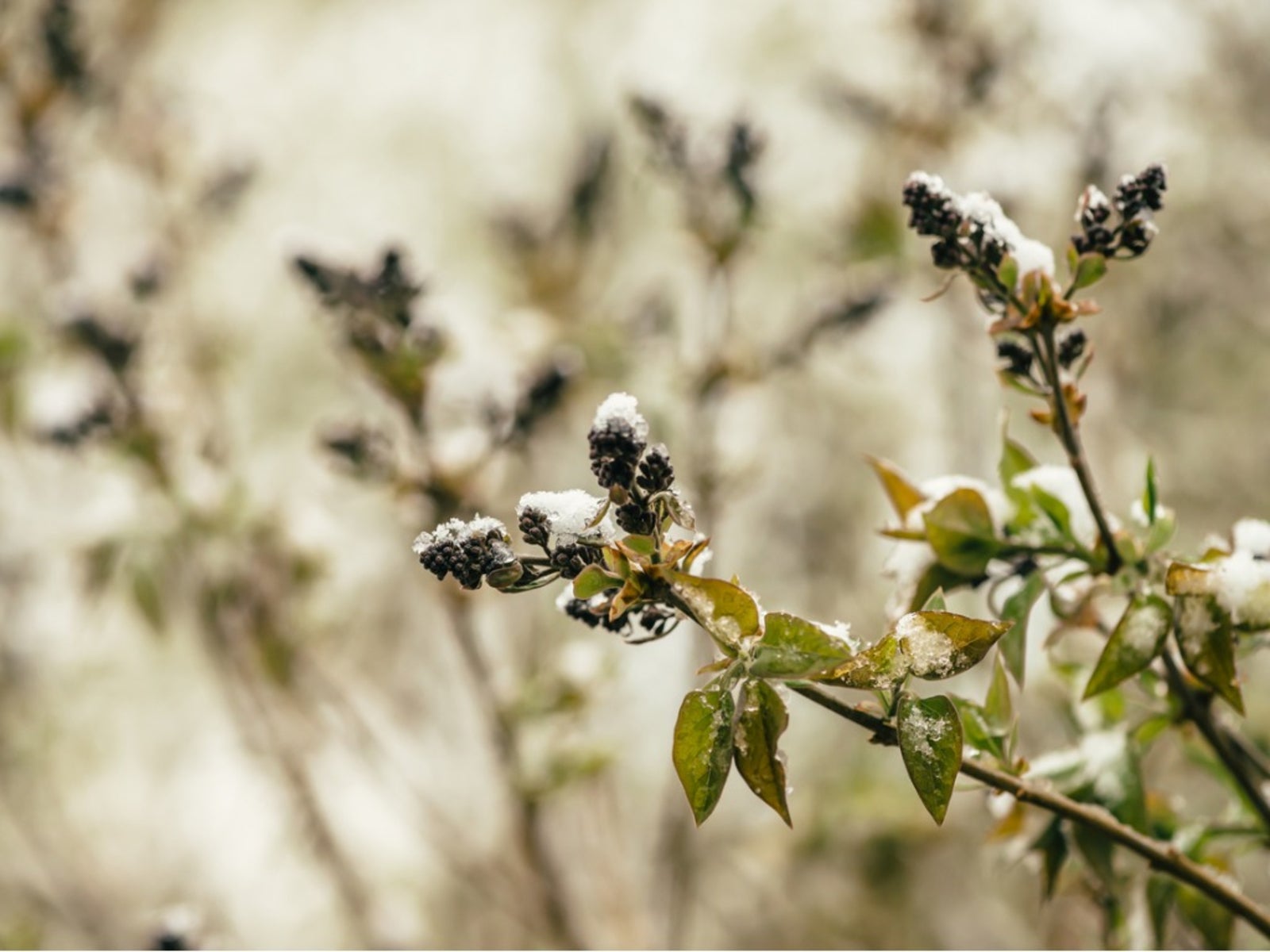Winterizing Lilac Shrubs: Tips For Lilac Care In Winter


Lilacs are superior performers when it comes to blooming. They develop buds in the fall which overwinter and burst into color and scent in spring. Winter freezes can damage some tender varieties, but the majority of lilac cultivars are hardy to USDA zones 4 or even 3. With good pruning practices and some spring babying, the plants handle a hard winter beautifully and need little special lilac care in winter.
Winterizing Lilac Shrubs
Lilacs are one of the most winter hardy ornamental plants around. Do lilacs need cold protection? They can withstand temperatures of -40 degrees F. (-40 C.) but may need some protection from icy winds that damage the flower buds. They need well-draining soil to prevent frozen water from damaging their roots and killing the tree. Lilacs that have not been grafted are hardier than those that have been grafted to rootstock. Lilac winter care starts with good siting and a healthy plant. The plant needs at least eight hours of sunshine and alkaline to neutral soil. When choosing a planting location, avoid planting them against a light-colored building or wall, as this can cause winter burn from the reflection. They make a brilliant front of house display and darker buildings can actually afford lilac winter protection. However, avoid planting them too close to the foundation, as their roots can cause issues over time. Prune off the spent flower heads to help promote bud formation. Winterizing lilac shrubs is not the intensive process it is for sensitive plants.
Lilac Care in Winter
Lilacs withstand a chilly winter better than most plants. They do benefit from occasional watering if there is no precipitation available to the roots. Watering around the root zone actually keeps the soil warmer than dry soil, offering lilac winter protection. In rare cases, you may need to cover the plant to protect the buds. This occurs in late winter to early spring when buds are beginning to break, and a harsh freeze comes along. Use a blanket, canvas, or even plastic tent over the bush to help protect the buds form the cold. Remove it during the day if temperatures warm up so the plant can get sun and air.
Pruning for Post Lilac Winter Care
Pruning is not important for the first five to six years of a young lilac's life. It can be an important step to lilac recovery if winter damage has occurred. Wait until the plant has bloomed before you make any cuts to avoid removing the flowers. Cut out any damaged or diseased stems. Thin the suckers by one-third for complete rejuvenation of old plants. After three years, the plant will be renewed without affecting bloom production.
Gardening tips, videos, info and more delivered right to your inbox!
Sign up for the Gardening Know How newsletter today and receive a free copy of our e-book "How to Grow Delicious Tomatoes".

Bonnie Grant is a professional landscaper with a Certification in Urban Gardening. She has been gardening and writing for 15 years. A former professional chef, she has a passion for edible landscaping.
-
 4 Superfast Composting Methods: Turn Waste Into Garden Gold In 30 Days Or Less
4 Superfast Composting Methods: Turn Waste Into Garden Gold In 30 Days Or LessTry the fastest composting methods to turbocharge your pile and transform kitchen scraps and garden waste into finished compost in just a few weeks.
By Mary Ellen Ellis
-
 Best Spider Plant Soil – Complete Soil Guide And Expert Tips For Keeping Plants Happy
Best Spider Plant Soil – Complete Soil Guide And Expert Tips For Keeping Plants HappySpider plants are fun and easy plants to grow, but what is the best soil for a spider plant? Selecting the right soil is important so they can thrive.
By Bonnie L. Grant